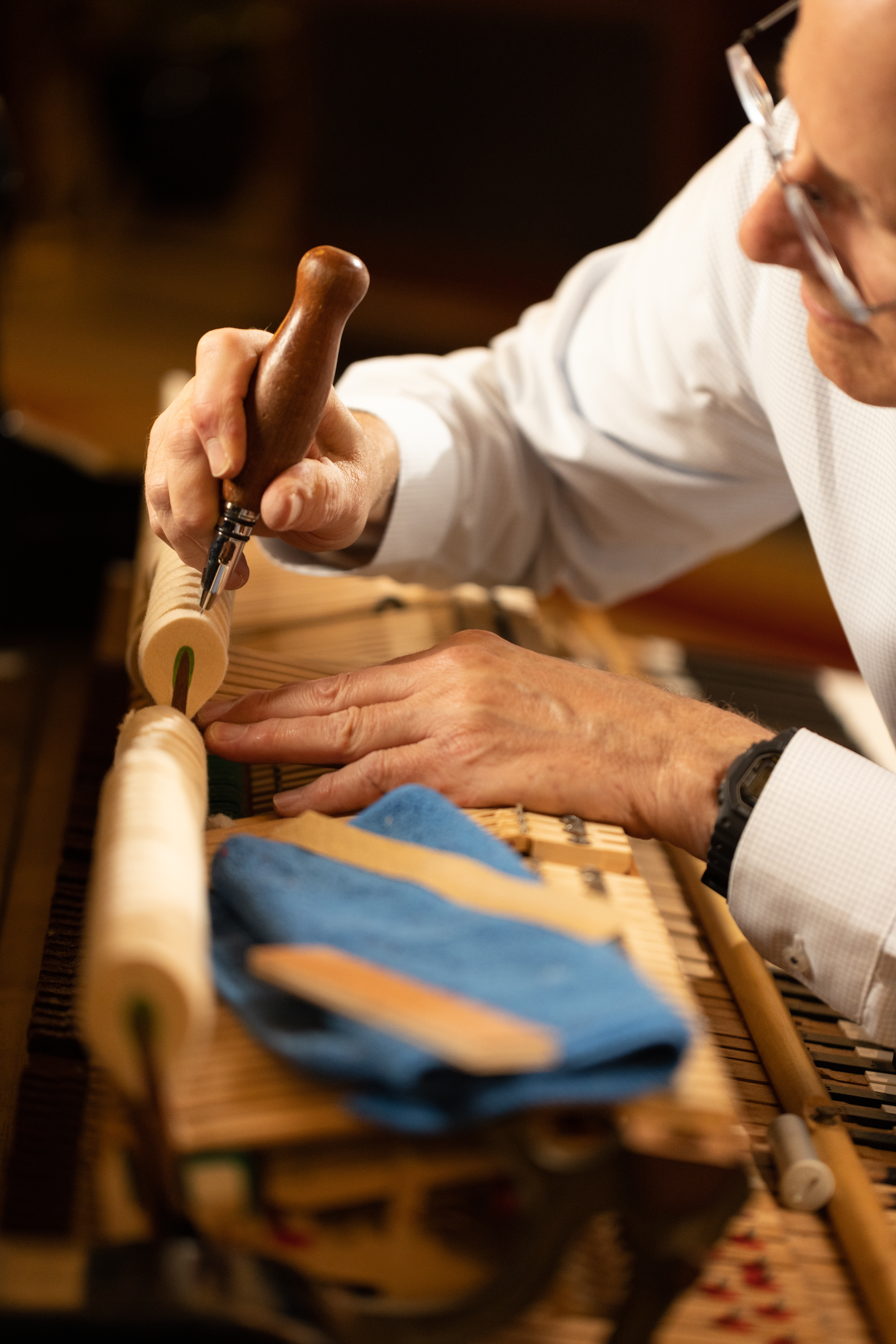Services
Piano Voicing
What Is Piano Voicing:
Voicing or tone regulation is the process of changing the character and timbre of the piano tone to make it more pleasing and even from note to note throughout the range of the piano. Voicing includes preliminary repair and regulation of the action, string leveling and other fine adjustments. Hammer shaping and felt regulation follow.
Voicing can change the character of a pianos sound to match individual tastes and increase or decrease the brightness of the instrument. Our goal in voicing is to produce a full, rich, clean and even sound with excellent sonority and sustain. We avoid bright or harsh over voicing and strive for a smooth bell like tonal quality with even progression of tone throughout the scale.
All pianos benefit from voicing regulation at various time. Hammer felt is highly compressed. Over time distortions including string cuts in the surface and flattening of the crown cause changes to the sound of the piano. Wear is also a factor.
Among the techniques used in voicing:
- Needling of hammer felt
- Liquid infusion to the hammer felt for hardening purposes (sometimes called lacquering)
- Filing and shaping of the hammer head
- Ironing of hammer felt
- Gentle steam exposure to surface felt of hammers
- Action regulation adjustments
- Hammer tail and cove shaping to reduce mass

“Mr. Cappelli’s expertise provides consistent voicing throughout all registers, enabling us to enjoy a rich Steinway sound from low bass to high treble.”
Frequently Asked Questions:
Q: I have heard the term “voicing” before. What does it really mean:?
A: Voicing loosely means changing the voice of piano tone. In our voicing procedures we look at ways to improve piano tone through action regulation, reducing unnecessary friction, hammer travel, string leveling, hammer shaping and felt conditioning. We may use needling, liquid hardening or other means of affecting the felt at the hammer head in order to change the quality of sound produced by the hammer at the strings.
Q: My piano is too bright. How can I have you adjust it to be more mellow:?
A: Following the prerequisite action regulations, the hammer can be shaped, needled and gently brushed. This is done per hammer, as needed for a smooth transition of tone throughout the range of notes affected.
Q: My piano is too mellow/dull. What can be done to bring up the tone:?
A: Again, following requisite preliminary action regulation we may choose to shape and “voice-up” the hammers with a solution of lacquer thinner and lacquer which we make to firm the hammer cloth. Ironing with a hammer iron may follow.
Q: When are new hammers necessary:
A: When the cloth at the crown has been worn to the point that not enough cloth remains at the strike point to work with. Another reason may be the loss of tension or compression remaining at the hammer felt, or integrity of the felt.
For The Finest In Piano Servicing
Contact Chicago Piano Service, Inc.
Address
1038 Jackson Ave
River Forest, IL 60305
Hours
By Appointment Only
